Last updated on 8 December, 2022
Kayaking Cairns, Double Island with its deserted beaches, sea turtles, coral reef and sea cave, only 1.5km off Palm Cove beach it is the perfect opportunity for a self guided paddle.
Driving to Palm Cove
Palm is a picturesque seaside town with a jetty, coastal walks, stunning white sand beach, cafes and accommodation. The area is also dog friendly.
To get to Palm Cove it is a 30 kilometre or 25 minute drive north from Cairns City.
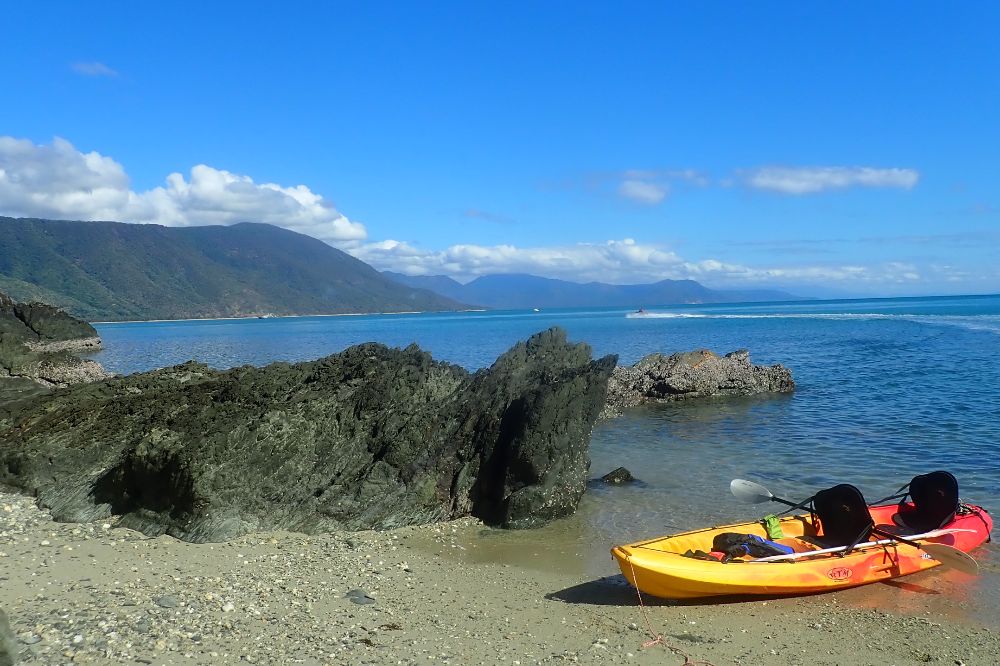
Double Island Palm Cove | Kayaking Cairns
Double Island Cairns is traditionally called Wangal Djungay. It is the closest island to the mainland off Queensland’s within the Great Barrier Reef.
It once had an exclusive resort. The resort is no longer operating but a jetty and other resort buildings and structures still remain on the island.
Double Island is officially dog friendly according to Cairns City Council so feel free to take your dog on your kayaking adventure with you. We did!
Also be aware that there is a dog that lives at the disused resort. Probably friendly, he is someone’s dog not a stray left on the island, but we chose not to stop on that particular beach because we were uncertain if it was private property or not.
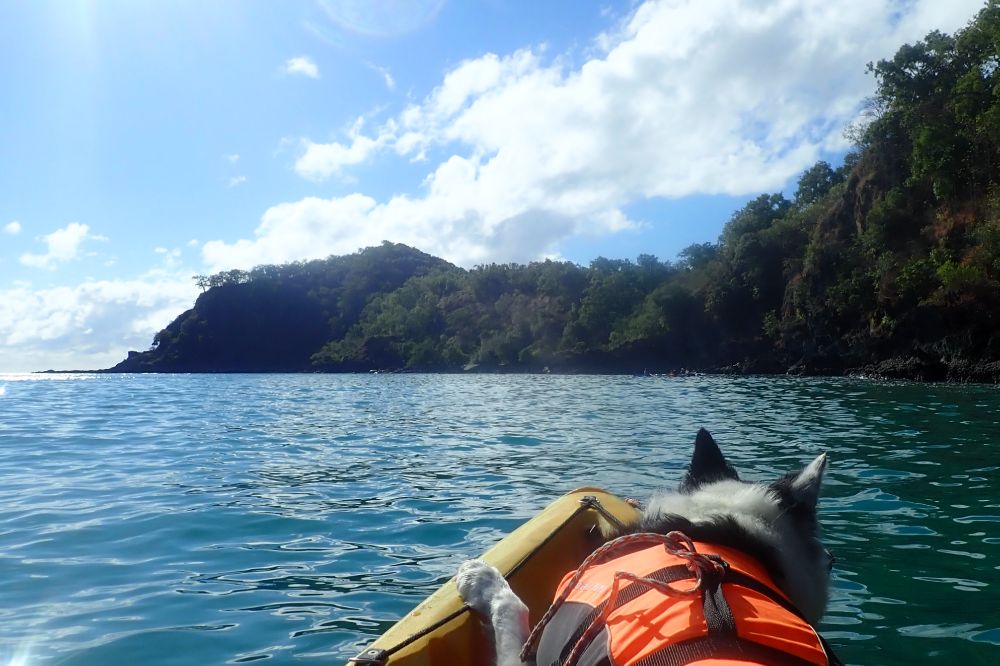
Launching to Double Island
Kayaking Palm Cove beach to Double Island is best done by launching off the beach at the Palm Cove Jetty. If you can, use the beach side parking at the northern end of Williams Esplanade as this gives you the closest access to the beach and the jetty.
I recommend kayaking to and from Double Island when conditions are calm and the weather is sunny and fine. These are the safest conditions well as the best for spotting sea turtles, seeing the Double Island reef and for the adventurous paddling into the sea cave.
Kayaking Double Island
Which Way Around?
My top tip having paddled to and around Double Island, is if it is high tide paddle the front side of the island and head to the far end of the island so that you will circumnavigate the island in a anticlockwise direction. This is because at low tide the front side of the island becomes a sand flat and is impossible to paddle. It also means you will have to drag or carry your canoe or kayak about 500 metres to reach water deep enough to relaunch your vessel.
Alternatively if it is low tide when you launch (so the front of the island sand flats are exposed) paddle to the nearest point of Double Island and go around it clockwise. But note when the tide is likely to rise covering the sand flats again.
The Front Side
Characterised by mangroves, protected shallow waters and views back to the mainland. This section of the island is nice for a slow easy paddle, maybe some fishing and taking in views of the island landscape.
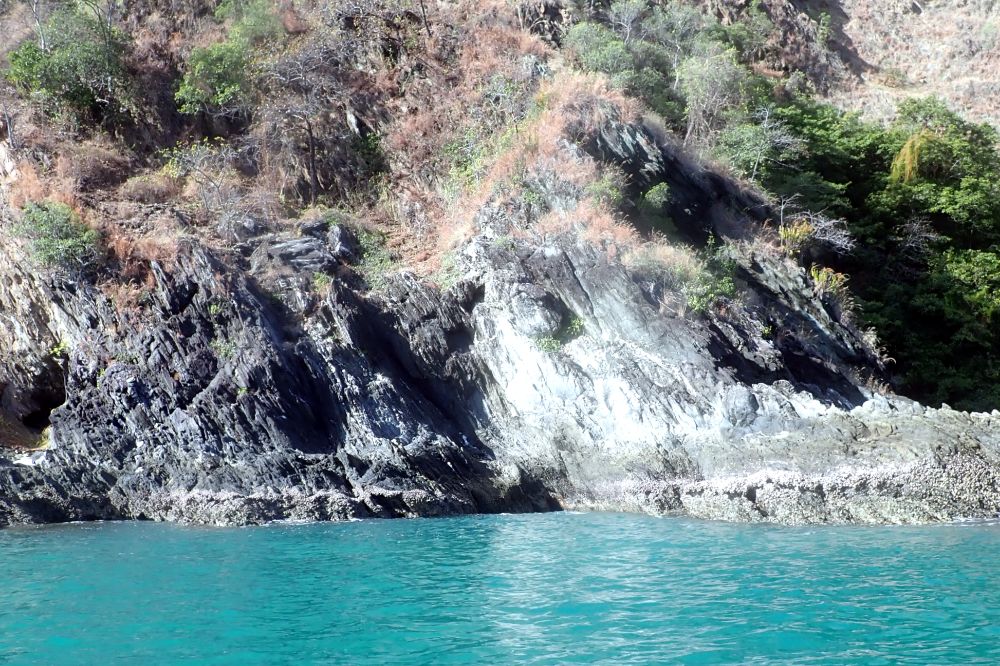
The Far End
The far end of Wangal Djungay is the most exposed. This is where wind exposure and unpredictable sea conditions. This section of the island features a rocky shoreline unsuitable for landing. It is however stunning to see.
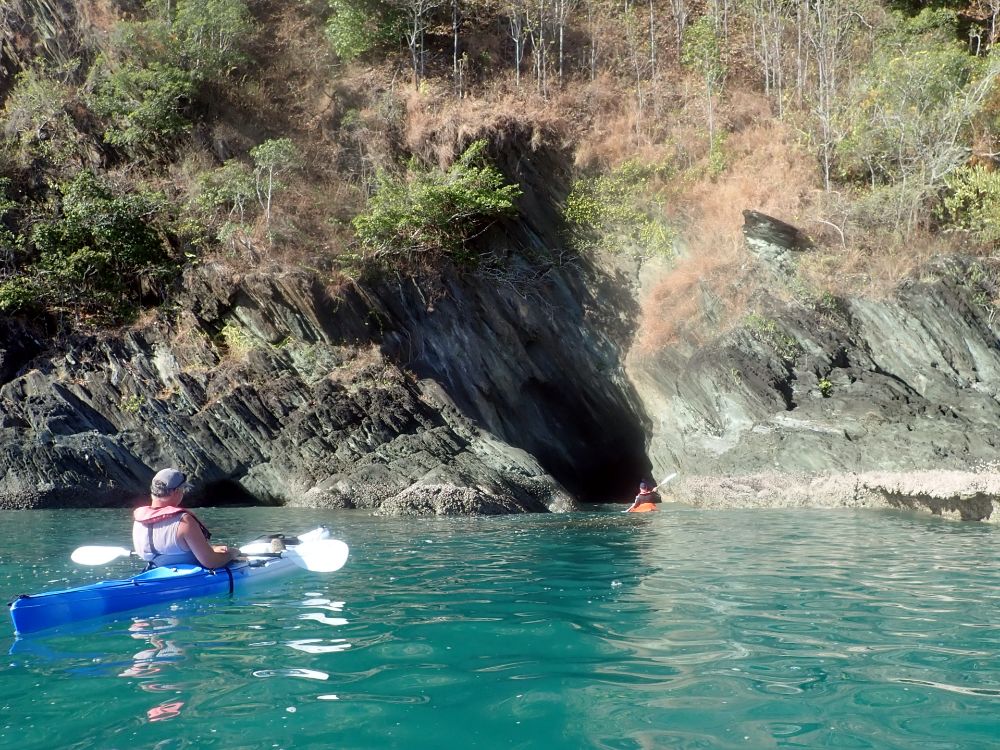
The Backside
Backside of the island look out for sea turtles swimming in the waters. Actually always be on the look out for turtles as you never know when they might pop their heads up.
This side of the island has a number of what I would call small alcoves with small beaches. The beaches or sand are scattered with bits of dead coral and there are rough rocks so wear shoes if you want to do any land based exploring.
I suggest taking the time to stop in one, take in the view of the sea from the beach and imagine yourself alone on a deserted island. It is unlikely you will be alone with kayaking tours, other kayakers and people on jet skis frequently visiting Double Island.
Also on the far side look out for the sea cave about mid way along. You know it by the swooshing sound it makes as the water rushes in and out of the cave.
The Nearest End
The front of the island is easily recognised by its jetty and remains of the disused resort. There is also the largest stretch of white sandy beach where you are most likely to see the resident dog. It turns out, we learnt after our paddle, that you can stop on this beach of you wish. The resort itself is out-of-bounds.
The last thing you can do at Double Island is to snorkel a small coral reef. Finding the reef is pretty easy. Located in the waters directly off the front of the island’s jetty and a bit to the left. It doesn’t stretch out very far, a 100 metres or so however it is worth a look if conditions are right.
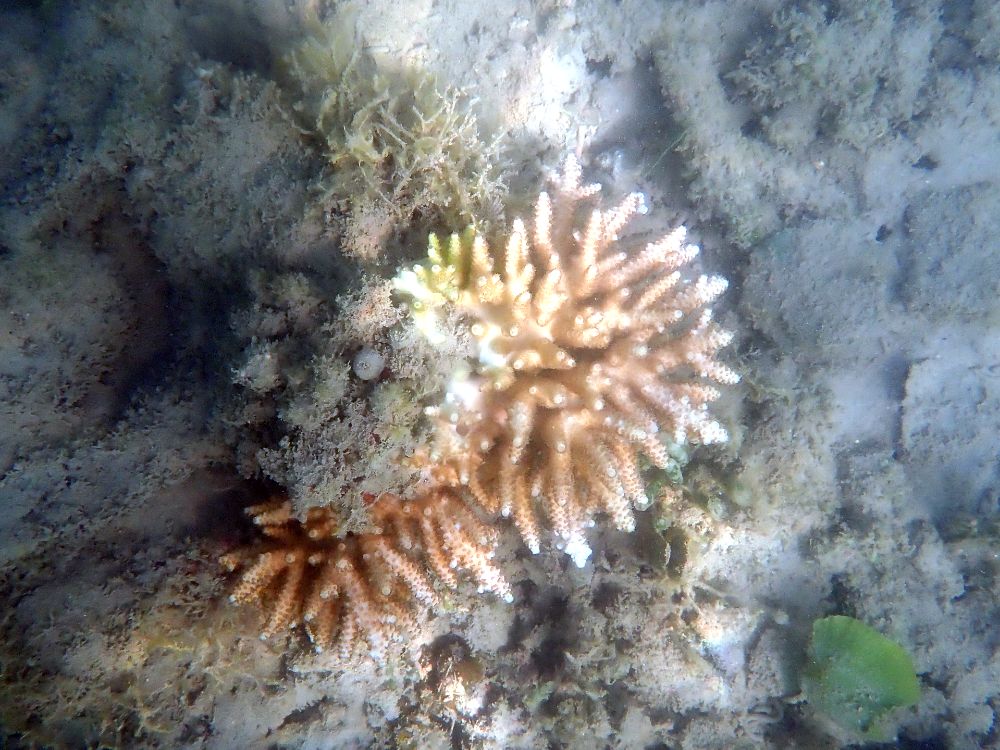
Made of soft and hard corals with some amazing colours and some (but not a lot) of fish. Unfortunately the water can often be murky so visibility can be poor. Best times for snorkeling is when there are no or low winds and 3-4 days before or after a full moon.
When I snorkeled this small reef visibility was a little poor but I was still glad I got in. All up I only was only in the water for about 20 minutes before we headed back to Palm Cove.
Return Paddle to Palm Cove Beach
The easiest thing to do is aim for the Palm Cove Jetty. The obvious landmark makes it easy to keep yourself on route and headed in the right direction. Off or on shore winds will of course dictate how much easy or difficult your paddle back will be.
Hope you enjoy your kayaking adventure to and around Double Island! All up we recommend allowing 2-3 hours for a beach stop, snorkeling and longer if you also want to try fishing.

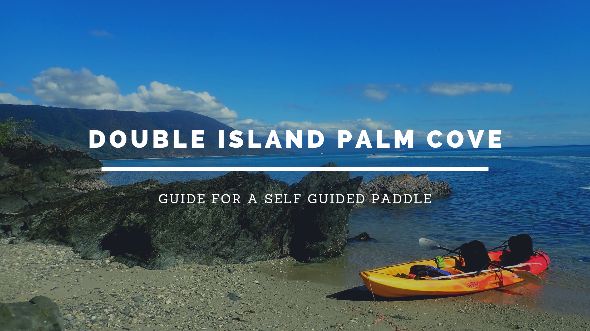
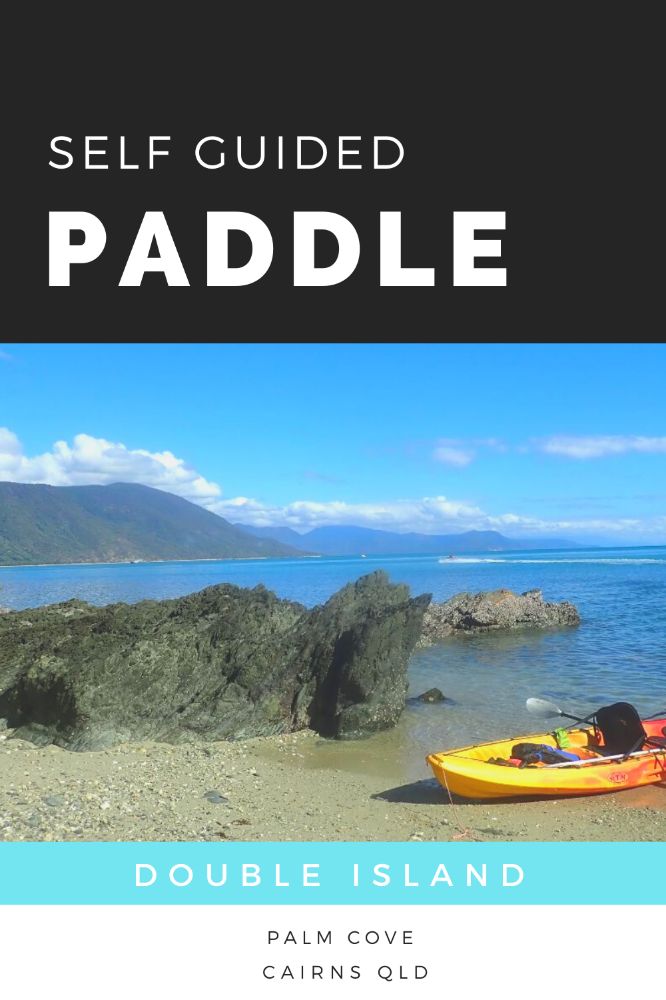
Love the sea and the sand!
What a beautiful place. I love that a dog lives there- keeping its eye in things!
What a beautiful peaceful place. It looks a great escape from world news.
Wow, this looks absolutely stunning! Plus having the chance of seeing sea turtles is exciting.
This looks absolutely stunning what I wouldn’t give to be there right now!
What a neat adventure and lovely tips!
What a beautiful place. I find the sea so calming and grounding. Your photos are stunning!
What an amazing a place! I would love to hive Kayaking a go